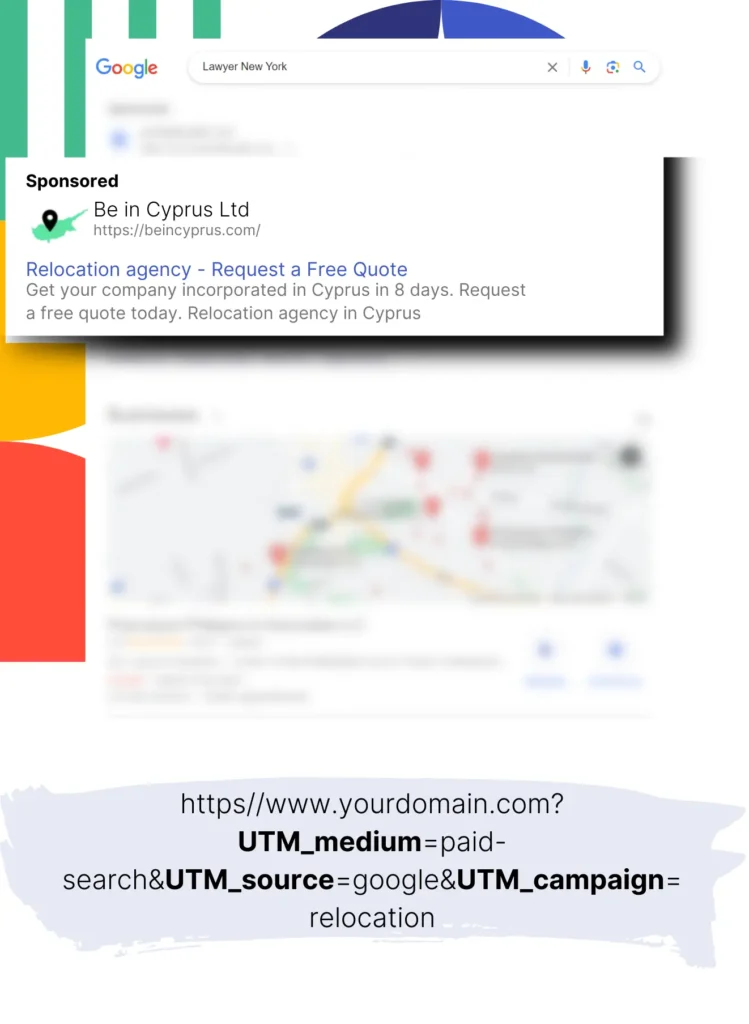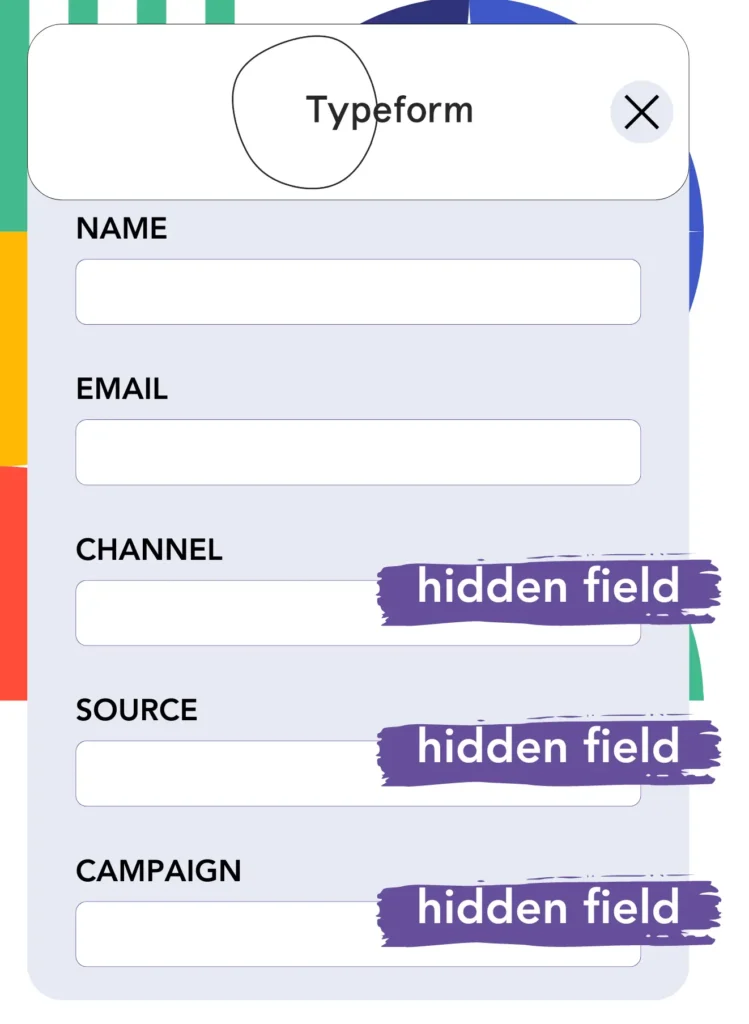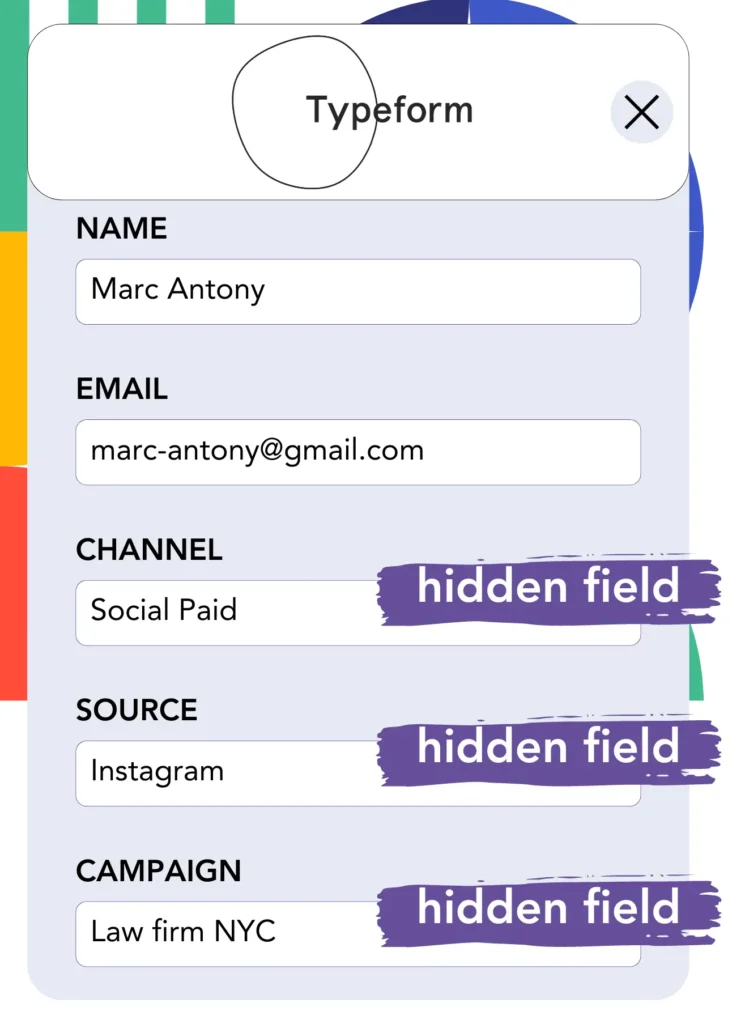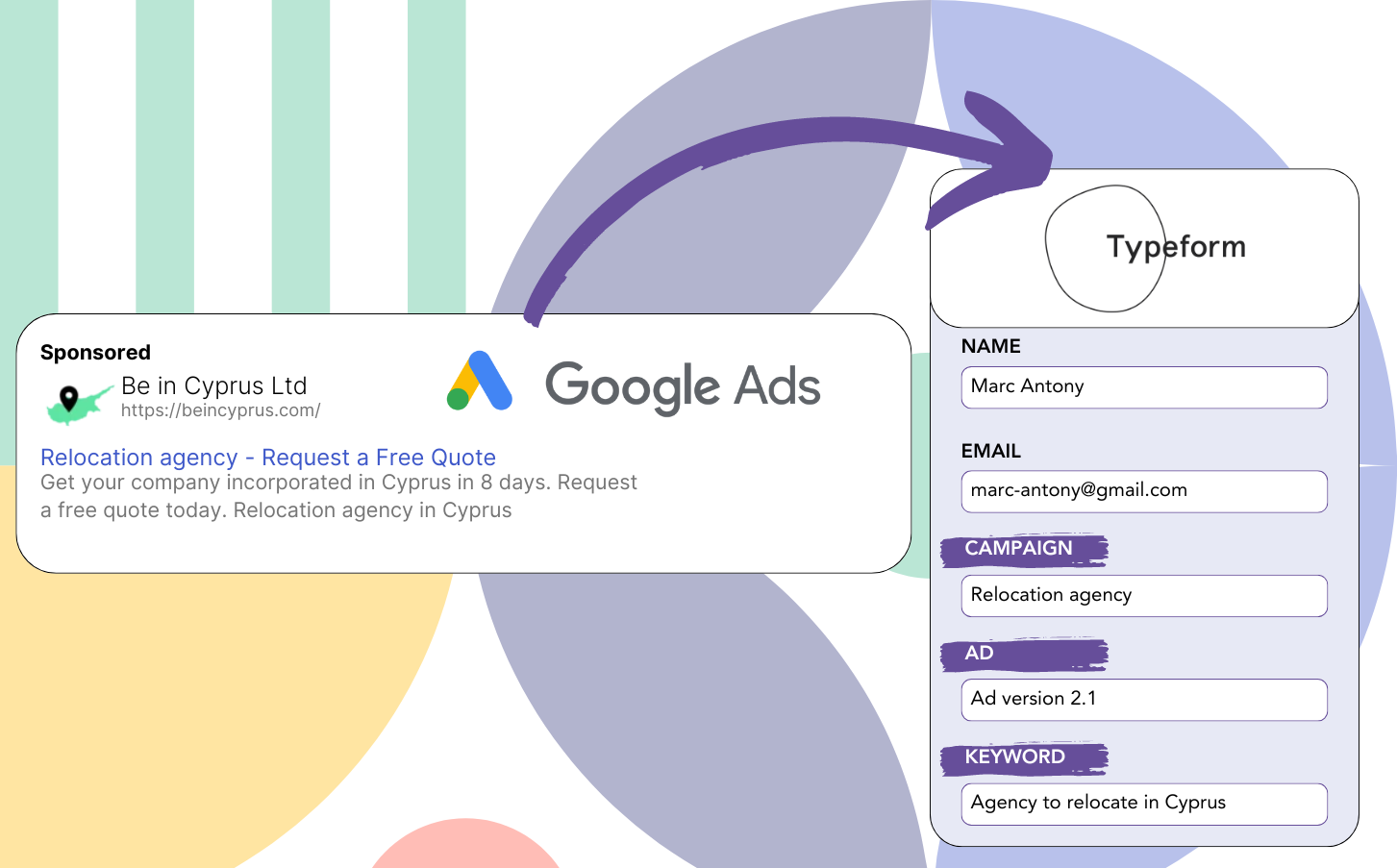You run Google Ads to create leads, but can you determine the source campaigns?
This issue is known. Google Ads counts leads from campaigns, ads, or keywords but fails to provide individual lead information.
This makes it difficult to determine which campaign, ad, or keyword produced the leads that resulted in customers.
Leadsources deals with the issue effectively.
LeadSources lets you track your Google Ads data (campaign, ad, keyword, etc.) for each lead individually.
You can then capture Google Ads data (campaign, ad, keyword, etc.) for every single lead in Typeform.
This makes it possible to run reports such as “Keywords that generated the most leads” and decide which keywords to focus on or drop.
Let’s dive in!
Capture Google Ads lead data in Typeform in 4 steps
Step 1: Add Leadsources in the head tag of your website

Sign up to Leadsources.io, and benefit from our 14-day free trial.
Place the LeadSources code in the head tag section of your website. No coding experience is needed.
Simply follow this easy step-by-step guide.
Step 2: Add the UTM parameters to your Google Ads campaigns

Place the UTM parameters you want to track into your Google Ads campaigns.
Consider adding these UTM parameters to your ad:
- UTM_source
- UTM_campaign
- UTM_term
- UTM_content
LeadSources also acquires data outside of UTM parameters, including the channel, landing page, and subfolder, for a complete lead-level perspective.
Step 3: Add the hidden fields in Typeform

When your Typeforms (name, email, etc.) are filled out by visitors, LeadSources automatically fills in the hidden fields with data from Google Ads (campaign, ad, keyword, landing page, etc.).
Follow the outlined guide to add hidden fields in Typeform to achieve this setup.
The Google Ads data will be entered directly into your Typeform by LeadSources.
Step 4: Capture the Google Ads data in Typeform

When a click on your Google Ads ad leads a visitor to your page, LeadSources logs the Google Ads data (campaign, ad, keyword, landing page, etc.).
The hidden fields in your Typeform are automatically filled with Google Ads data by LeadSources.
Upon completing the form, the Google Ads data along with the responses are sent to the Typeform submissions page.
How does Leadsources work?
When the LeadSources code is inserted into the head tag of your website, it will capture Google Ads data (UTM parameters and referrer) on each visit to your site.
The Google Ads data is then added to the hidden fields within your Typeform.
LeadSources will capture visitor data through the referrer even if UTM parameters are missing from the URL:
- Channel
- Source
- Campaign
- Landing page
- Landing page subfolder
With this approach, you can still track crucial lead source information even if UTM parameters are not utilized, including:
- On Google Search
- On your Instagram bio link
- On your social media posts
- Etc.
Most tools monitor lead data only when UTM parameters are present (mainly for paid and referral traffic) – which poses a problem!
Even if UTM parameters are not present, LeadSources still collects lead data for all channels:
- Organic Search
- Paid Search
- Organic Social
- Paid Social
- Referral
- Affiliate
- Display Advertising
- Direct Traffic
This supports the aggregation and monitoring of all lead source data in a unified central location.
Pro tip:
Track Google Ads data in all the popular online form builders, including Cognito Forms, Gravity Forms, Jotform, WPForms, and more. Learn how to add Google Ads UTM parameters in any form builder.
How to run performance reports
With Google Ads data captured in Typeform, you can now make performance reports like:
- Leads per campaign
- Leads per ad
- Leads per keyword
- Etc.
This provides the insights needed to make effective decisions about your Google Ads expenses.
Let’s evaluate the different types of reports you can produce.
Lead performance reports
Reports can be created to demonstrate the volume of leads generated from:
- Channel
- Campaign
- Ad
- Keyword
- Landing page
- Landing page subfolder
Example #1
For campaigns across different channels (SEO, PPC, email, etc.), export the data to generate a report called “Leads by Channel.”

Example #2
Once you know which channel is most effective at generating leads (e.g., Google Ads), you can go deeper by choosing this channel to see the lead count for each specific ad campaign.

Example #3
After determining the campaign with the most leads, you can look into which specific keywords are driving the lead generation.

Sales performance report
Finding the ads and keywords that bring in the most leads is useful, but do they also lead to greater revenue?
Sending your Typeform data to a CRM lets you create detailed and useful sales reports.
Example:
| Channels | Search Paid | Social Paid |
| Leads | 50 | 75 |
| Sales | 5 | 6 |
| Average order value | $150 | $100 |
| Revenue | $750 | $600 |
Following your Google and Facebook ad campaigns, you saw that Social Paid ads produced a higher volume of leads compared to Search Paid ads.
After a few weeks of analysis, it’s apparent that the Search Paid channel earned more revenue with fewer leads compared to the Social Paid channel. This helps in deciding to raise the budget for Search Paid campaigns.
LeadSources tracks the source of each lead on Typeform, whether they come from ads, organic search, social, email, etc. and syncs that data with each submission. See the full breakdown on the lead source in Typeform page.

